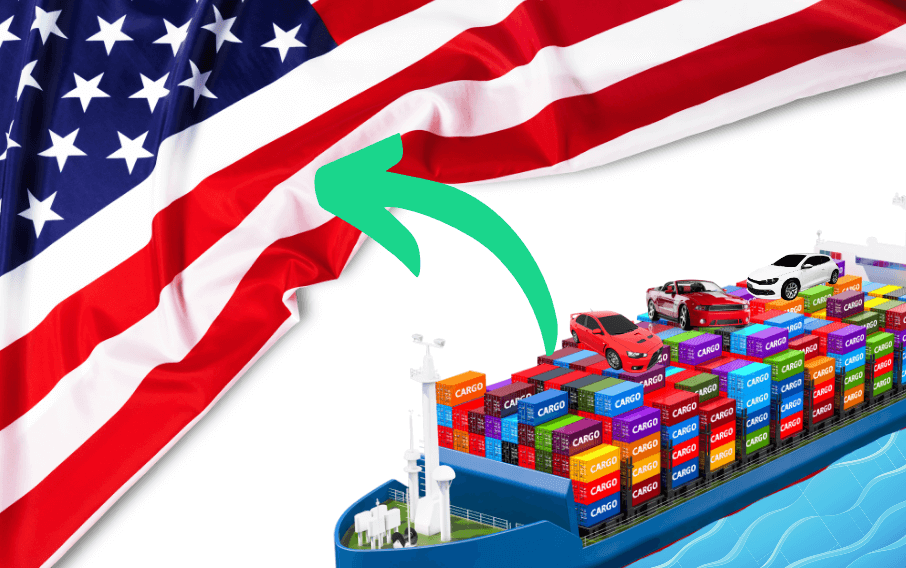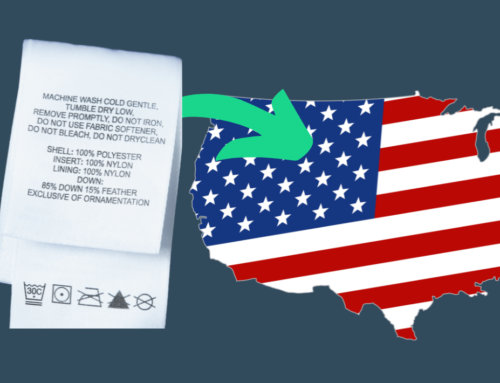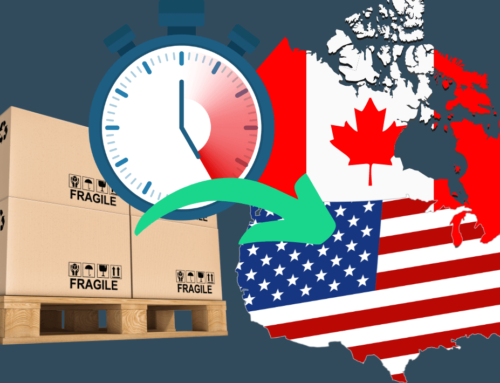How to Ship Your Imported Car to the USA

Breeze Customs Blog
If you’re importing a car from another country, one of the things you need to take care of is how you’ll be bringing your car into the United States. There are a few different shipping methods you can choose from, each with its pros and cons. So, if you’re wondering which is the best option for you, keep reading to find out!
What are the different shipping options for imported cars?
Whether you’re importing your car from the UK, Canada, Japan, Germany, or even China, there are several methods to transport it into the United States.
Truck Shipping
If you’re importing your car from Canada, you can drive it yourself or choose to bring it across the border via truck shipping. You will have to find a shipping company to help transport your vehicle from Canada to the U.S. The company will advise you on additional restrictions or requirements for transporting a vehicle via truck shipping.
If, however, you’re importing your car from another continent, you can bring it into the U.S. through air freight or ocean shipping.
Air Shipping
Air shipping is a costly but efficient means of transportation, especially when you’re importing rare and luxurious vehicles for show or display. Using air freight guarantees that the vehicle is safely and securely transported from anywhere in the world to the United States. The entire process is photographed and documented, and some shipping companies even provide Cargo Insurance.
Air freight is an option if you need your car delivered quickly – usually within 1-2 weeks vs 6-10 weeks by sea. The process is relatively straightforward; book a flight for your car and wait for it to arrive at its destination airport in a few days! Air freight shipments are typically more expensive than ocean shipments, but they offer added convenience and peace of mind compared to other options available on the market today.
Ocean Shipping
Roll-on/Roll-off (RoRo)
RoRo, or a Roll-on Roll-off ship, is a particular type of vessel that is used for the transportation of vehicles. Also known as car carriers, RoRo vessels have special ramps that make the loading and unloading of vehicles and cargo easier and more convenient.
Vehicles are loaded into a RoRo vessel containing a large cargo area that resembles a big parking garage. This option tends to be more affordable as, other than shipping charges; you will only be required to pay port charges and customs clearance fees.
If you opt for RoRo, ensure that your vehicle does not contain any items since several parties will have access to it. Also, handlers should be able to run and drive your car, or you will have to cover additional costs for transporting it once it arrives at a U.S. port.
Container Shipping
Shared Container
This shipping method uses a single container to transport multiple vehicles. More fees are involved than with the roll-on/roll-off shipping method as the container will have to be processed; however, these fees are divided between the multiple vehicle owners using the container. These include a terminal handling charge, customs clearance fees, a trucking charge, and unloading charges for when the vehicle reaches a bonded warehouse.
One downside of this method is that shipping is only possible when there are enough vehicles to fill the container, so there might be a wait if the requisite number has not been reached.
Cars shipped in shared containers do not have to run and drive. The entire loading process is photographed and recorded, and the container is sealed shut until delivery; it is only opened for customs inspections. This allows vehicle owners to store items safely, but they should create a list of all items in the car.
Sole Container
With sole container shipping, you have the added benefit of a fully enclosed container, just like the shared container service, but the 20 or 40 ft container is dedicated solely to your vehicle. Since there’s no wait for other cars to be loaded, you’ll enjoy a shorter wait before departure. However, additional terminal handling fees and other charges won’t be shared with other vehicle owners.
Some importers prefer the high level of safety and practicality offered by private containers. The vehicle’s condition is photographed and documented upon arrival and loaded using a modern steel loading system. The loading process is also photographed and documented.
Once the car is loaded, it is locked in the container until it reaches its final destination. Since no one has access to the vehicle, it can be used to transport additional items. However, owners are advised to pack all items securely, as shipping companies will not be held responsible for the loss or damage of stored items.
Choosing a port of entry for imported cars
Navigating the U.S.’ myriad land, air, and sea ports of entry can be a complex task for importers. We suggest starting with this interactive map that provides comprehensive port details and their associated requirements — to ensure your journey is hassle-free from start to finish! You can speak to a customs broker to help you choose the most suitable port of entry.
Upon choosing your port, you must find a shipping company to transport your vehicle. Seek the help of an experienced agent or customs broker if you do not have contact with an overseas auto shipper.
What are the required documents for shipping imported cars?
Now that you’ve determined your shipping method and port of entry, you’ll need to prepare your import documentation. The documents required to import vehicles into the United States are:
- An Importer Security Filing (ISF 10+2) for Ocean shipments
- An EPA form 3520-1
- A DOT form HS-7
- A U.S. Customs Proforma Invoice
- The carrier’s Bill of Lading (BoL)
- A Bill of Sale showing VIN
- Foreign Registration
- A copy of the Vehicle Registration
- A Letter of Recall and Conformity from the Manufacturer (if applicable)
What happens once my car arrives at the port?
Your imported car will be subject to a thorough inspection upon its arrival at the port. This includes ensuring that it meets all federal safety and emissions standards and examining if any necessary parts are correctly installed – including headlights or other lighting equipment. Additionally, an assessment of both tires’ makeup against the manufacturer’s sticker details and odometer reading relative to title documentation is mandatory. In some cases, further emission testing may also need to occur before successful registration within the United States is possible.
Here’s what you can do to ensure that your vehicle passes the inspection:
- Prepare your paperwork ahead of time.
- Clear your vehicle of any personal belongings.
- Ensure your car is clean of dirt and debris, especially the tires and undercarriage.
Avoid using your vehicle as storage for additional goods. Doing so will require you to declare all transported contents to customs and may even lead to additional costs or your car being seized.
Conclusion
No matter which type of shipping method you choose, importing cars into the United States can be an exciting experience if done correctly. Whether you decide on RORO shipping, container shipping, truck shipping, or air shipping, rest assured that all methods are viable options when it comes time to import your car from abroad. Take some time to consider what works best for your needs before deciding which route is right for you, and if you need any help, you can reach out to us.
How Breeze Customs can help
At Breeze Customs, we help hundreds of importers bring their vehicles into the United States every year without any hassle. From checking your vehicle’s admissibility to preparing and filing your documentation, we’ll take the work off your shoulders. Book a meeting with one of our Breeze Customs Concierges and we’ll take it from there.




